How Cocoon's silent alien world found its voice with synthetic sound
Interview |Geometric Interactive's Jeppe Carlsen and Jakob Schmid take us on a tour through Cocoon's excellent soundscape
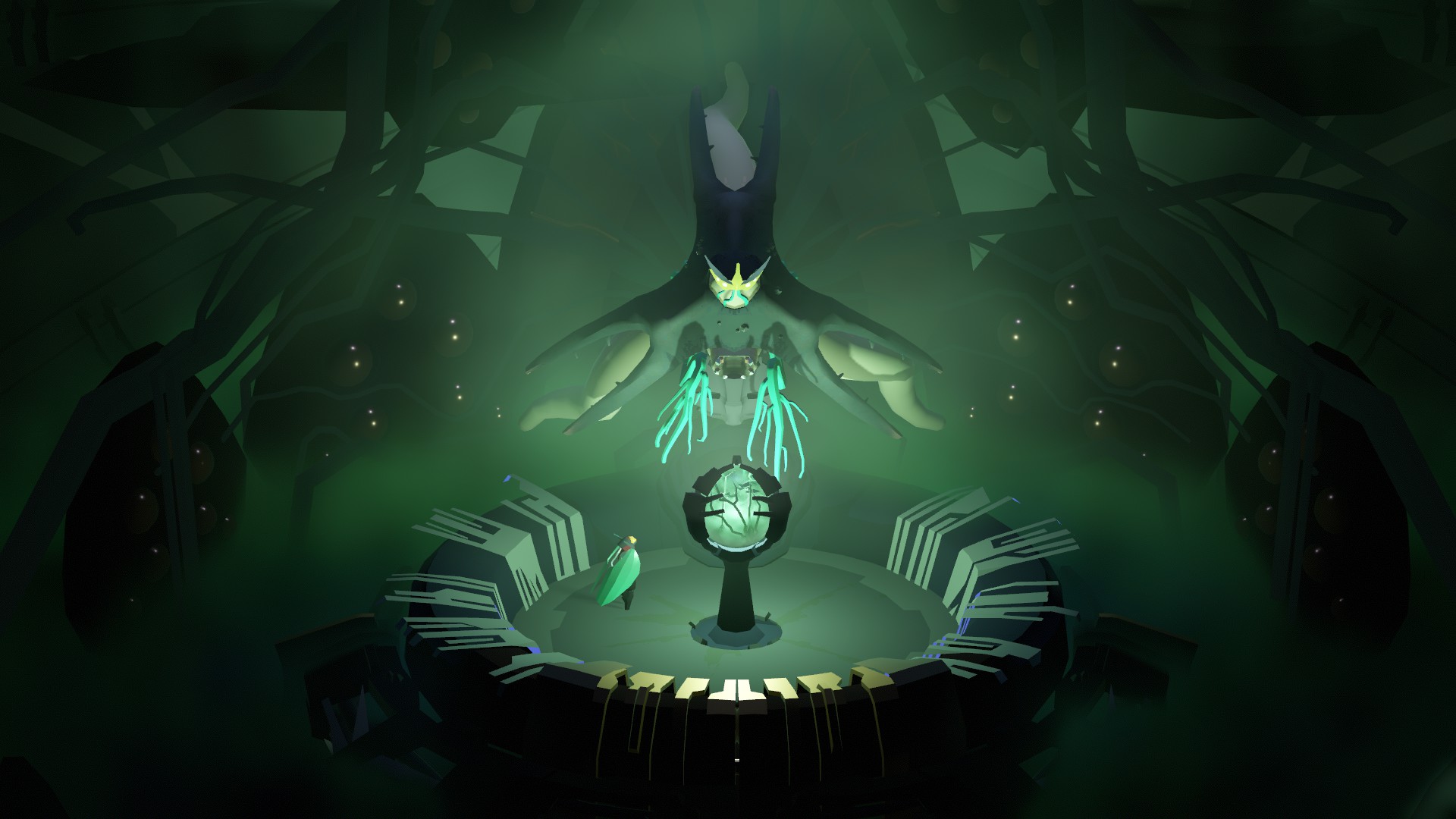
The first thing you realize while playing Cocoon is how quiet it is. Geometric Interactive's Cocoon follows closely in the footsteps of puzzle predecessors Journey, Inside, and Limbo in that it completely does away with dialogue and text. It's on the player to work out what makes the world tick: how to navigate through it and interpret its silent stories.
It may initially feel like Geometric Interactive has dropped you into Cocoon's strange, biomechanical sprawl with little explanation and guidance (there's no tutorial, no text, nada). But as you begin to venture further into the world it quickly becomes apparent that, actually, Cocoon is constantly communicating with you. This is in part due to seamless puzzle design, smart environmental layouts, controller feedback, and a pitch-perfect puzzle difficulty gradient. But a crucial part of Cocoon's spell is its incredibly rich soundscape that's teaming with life.
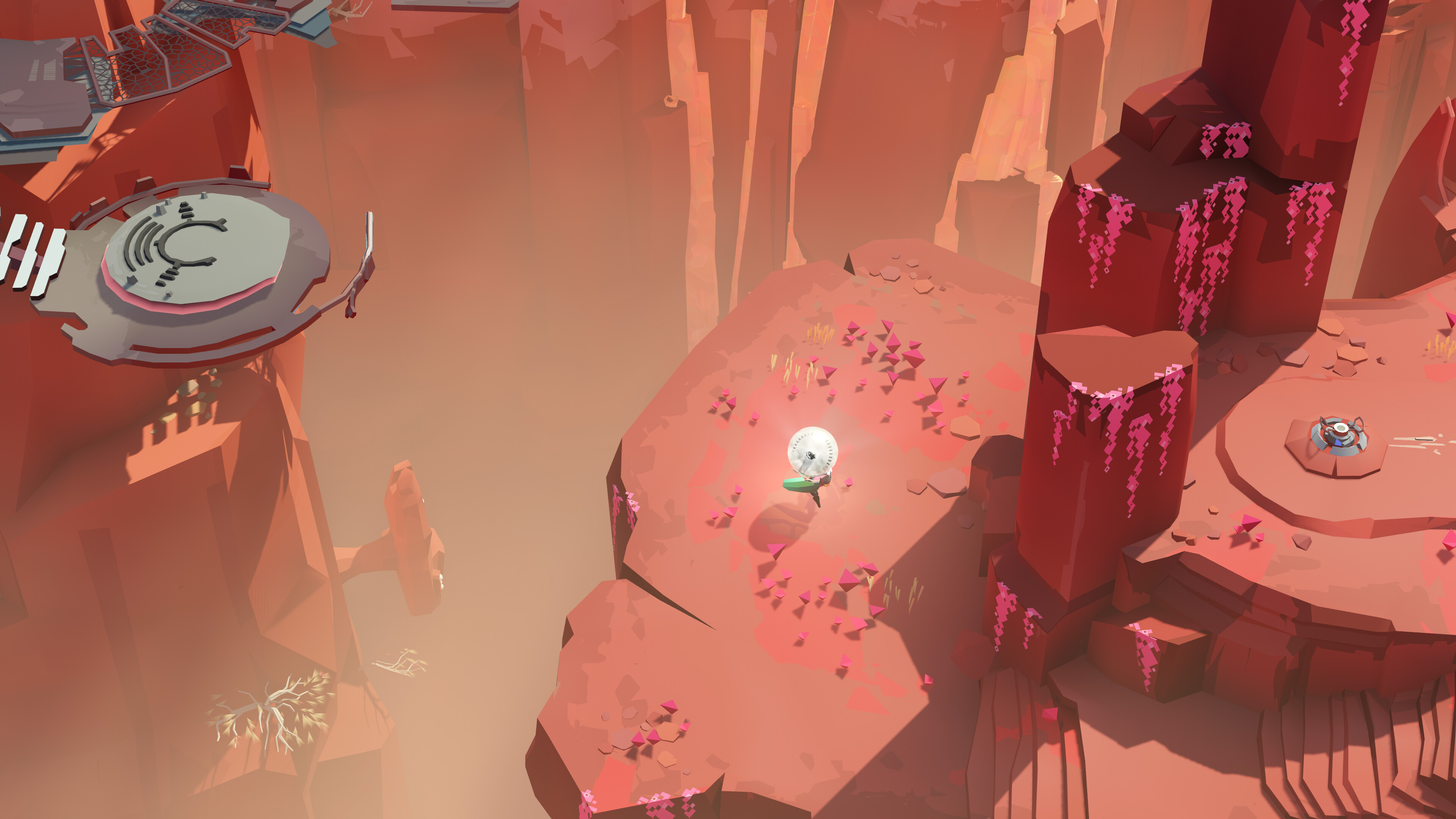
Cocoon review: "An utterly spellbinding puzzle platformer"
So, how did Geometric Interactive find the right sound for their alien world, one that's a wonderful fusion of squishy organic matter and cold, industrial metal? "No samples, no recorded sound. For the whole project we have been working synthetically," says Jakob Schmid, Geometric Interactive co-founder, audio director, and composer. He continues, saying that every single thing you hear, from your character's footsteps to the opening of a giant gateway, all were the results of experimentation done by Schmid and his team. "For rain and thunder, animals and robots, all these things we just had to invent techniques."
Free from the idea that the soundscape didn't have to be too concrete and realistic, the experiments carried out by Schmid and his team of audio designers produced surprising results. "It was like the best I could have imagined, better than I could have imagined," explains Schmid. "I was so excited because I realized that it was actually possible, this game is going to sound amazing. It's going to follow my weird rule that I love and we can get away with something very unique without compromising on quality."
A bug's life
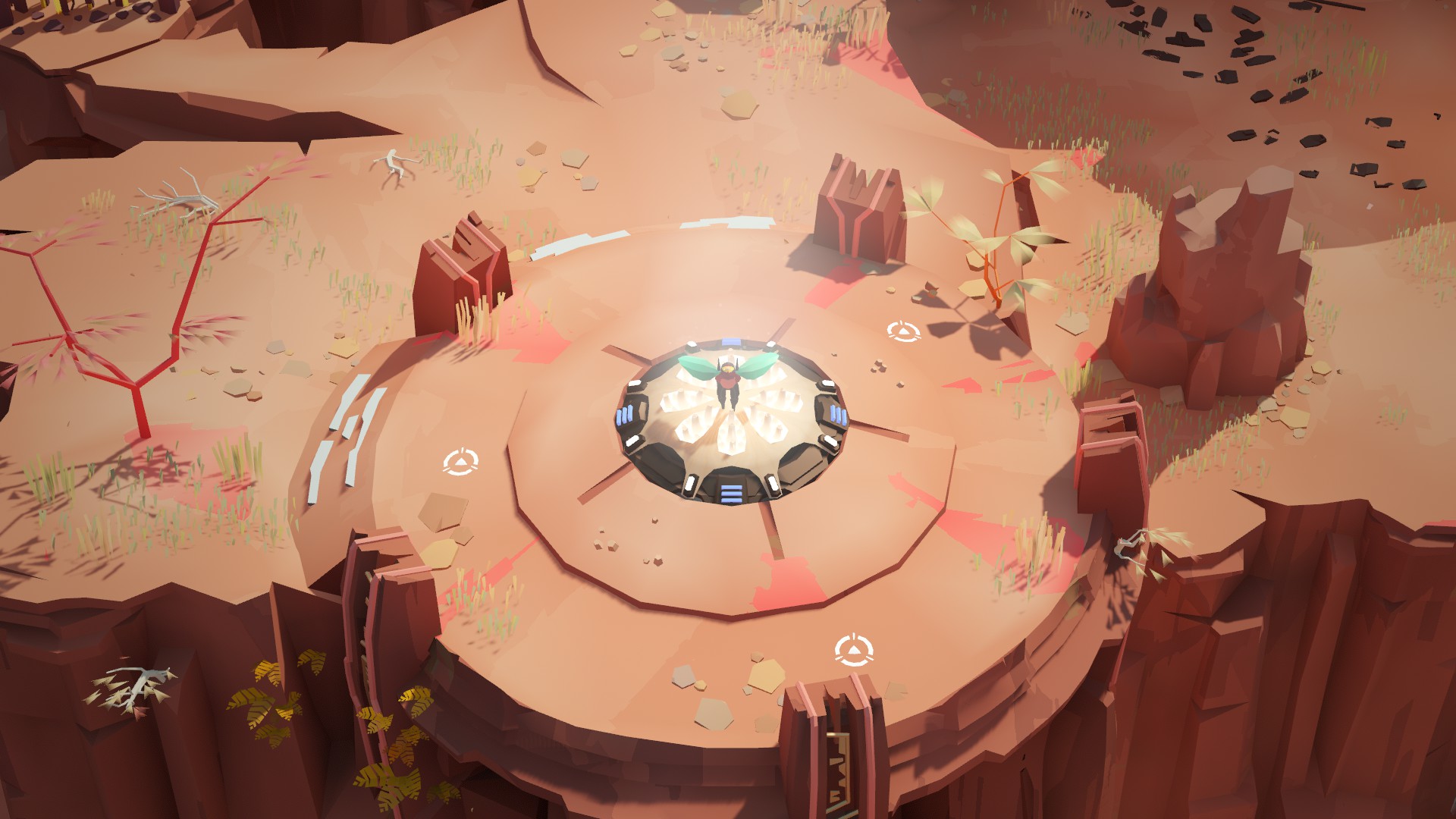
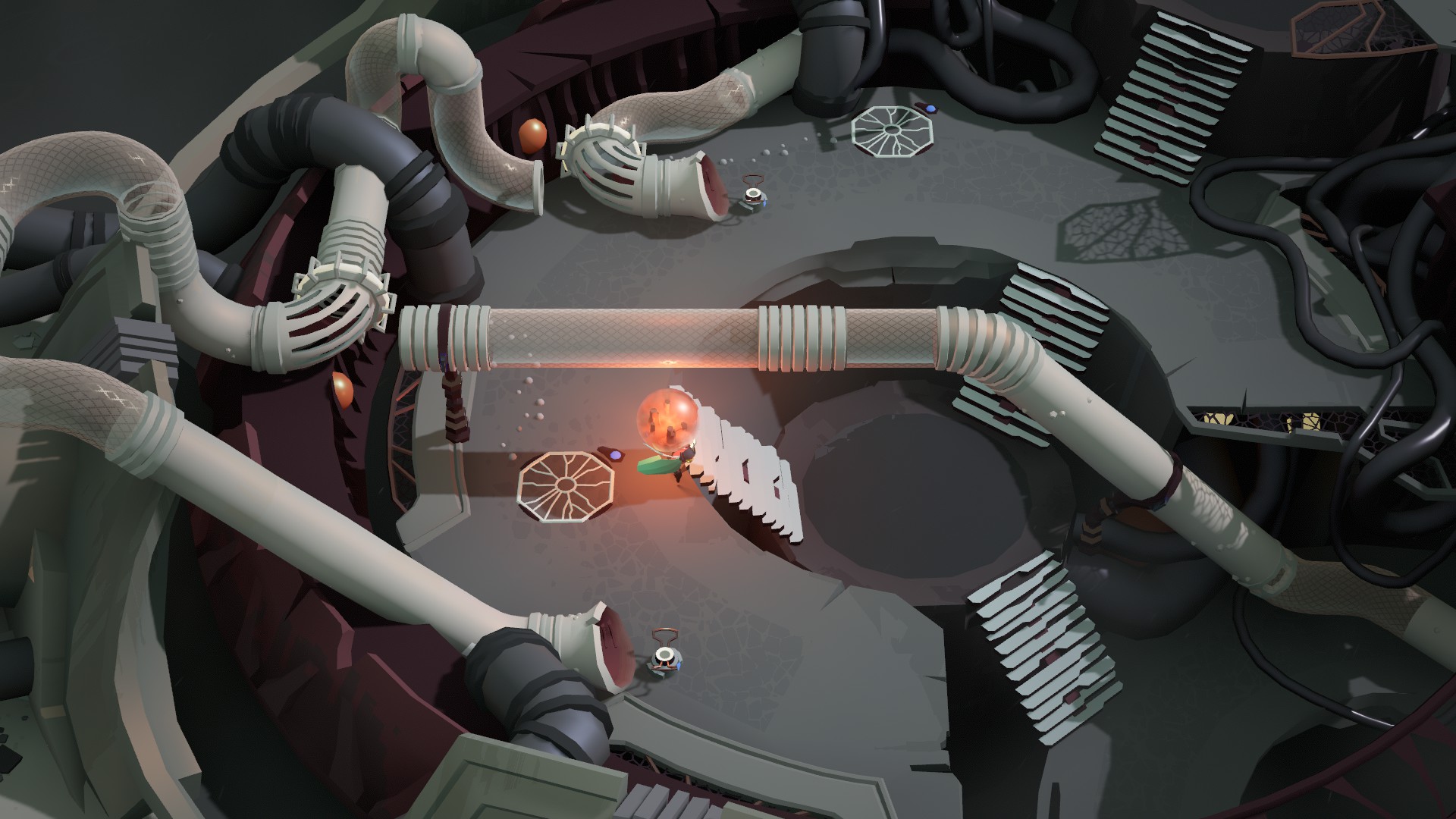
It'd be easy to compare Cocoon with its best-selling forerunners, but it's so much more than that
Creating an entire game's audio work completely synthetically is quite the task but the result is a game with one of the richest, densest atmospheres of the year. What's interesting about the audio team's work is their ability to create something that sounds organic and alien, but through completely synthesized means. Everything from the fleshy plant life, the quiet chatter of creatures, the subtle sounds of rain hitting metal – it all sounds incredibly naturalistic.
"There is the rain and thunder in the green world and [Lukas Julian Lentz, one of Cocoon's sound designers] was reading about how thunder sounds," Schmid says. "It's a phenomenon because it is so loud. It breaks the normal laws of sound, so has some natural distortion to it even in the real world which he tried to emulate. And when we listened to it, it sounded so amazing, like real thunder. Then one day there was an actual thunderstorm and he listened to the thunder and after he said 'I like mine better, sounds more realistic.'"
Schmid used a number of different techniques to get specific sounds. "There were a lot of times along the way where I wrote real-time synthesizers that actually played while the game was running," he says. "They were actually being controlled by systems from the game."
Weekly digests, tales from the communities you love, and more
To create more human-sounding noises, Schmid analyzed the frequencies of voices and songs to generate different tones. "The musical feedback is based on a voice that is just singing and the tones are created out of that," Schmid says. "It creates them in a way that I would never have played them myself on a piano. There's a lot of choices that are not necessarily keyboard-like, but they are more vocal-like."
Cocoon's world is dense with layer-upon-layer of these synthesized noises, and the result is a distinct soundscape that evokes a rich alien world full of life. One recurring friend is a yellow insect that can open closed pathways for you. At first, it just looks like a tiny flying machine, but its mechanical chirps make it feel distinctly alive. When it gets eaten up by a gloopy trap it makes a frightened warble in a way that makes you almost feel sorry for it. It's a charming addition that makes the world feel more alive, but also gives the game some personality too. During development, this was something that Geometric Interactive co-founder and Cocoon game director and game designer Jeppe Carlsen was keen to push.
"The game can be, for some, a little bit dry," Carlsen says. "Meaning there's no story, there's no direct humor or anything like that. So it's important to me with mechanics, but also to allow the sound designers to make something that brings a little bit of humor into it." As an example, Carlsen mentions the little black bugs that scuttle into hiding spots as you run past in the orange world. "It's not a joke or particularly funny, but it makes everyone smile, and the sound adds so much to that," he says. "I think that's important for the game because it helps not make it too serious in tone. The audio helps a lot in that regard."
Go with the flow
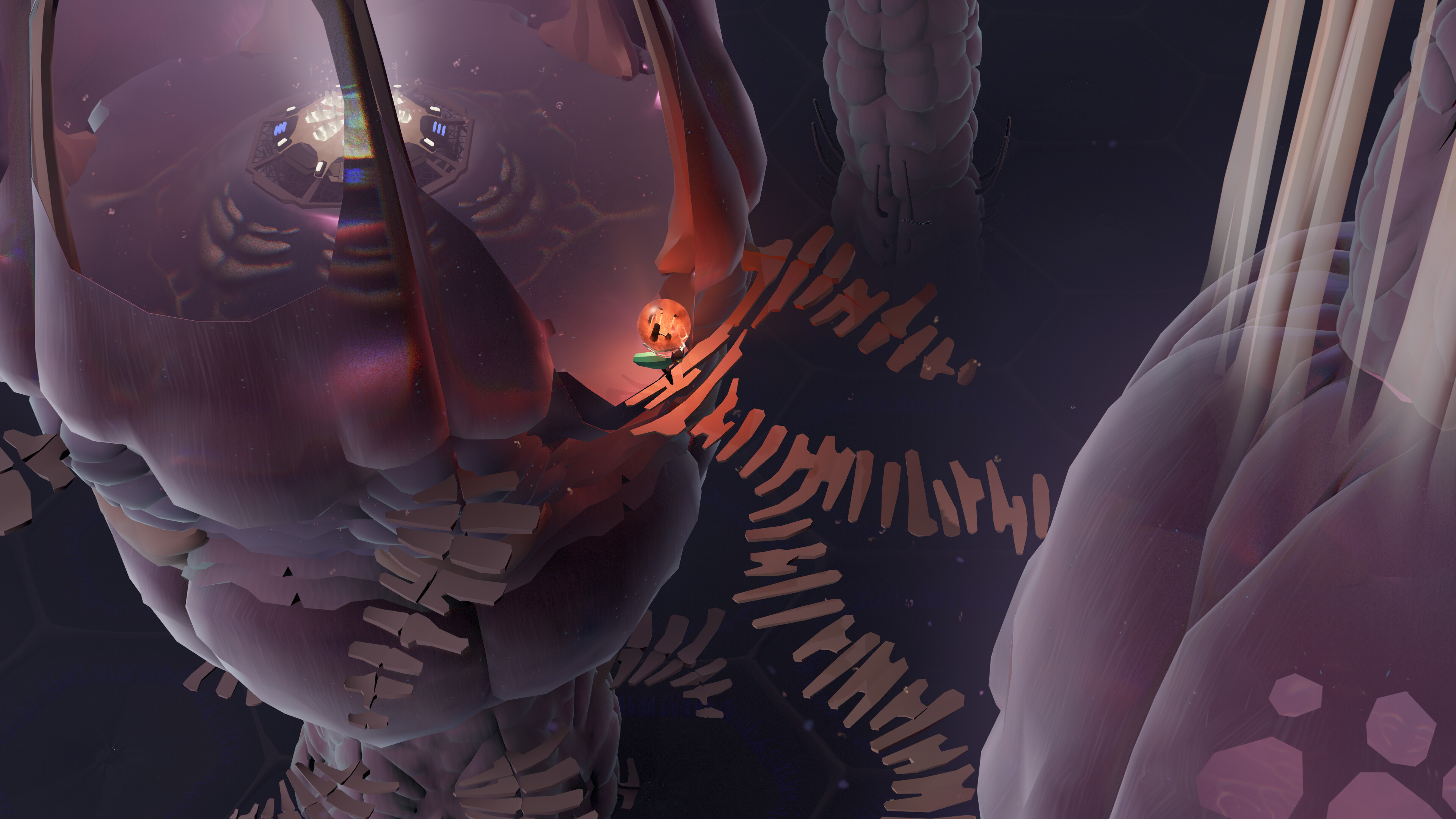
"The quiet rainfall of the lush, green world, the harsh winds of the desert world, and the endless reverb of the industrial world – they all have a distinct presence."
Part of Cocoon's allure is that playing it feels incredibly seamless. Moving from puzzle-to-puzzle is almost effortless, even though you're dealing with the most mind-bending mechanics. It's easy to get swept up in the game's rhythm and flow, and the game's audio design plays a large part in helping players slip into that zone.
"I'm very sensitive to loops, they get annoying very quickly for me, so I like the idea that [the audio] is constantly changing, like a little bit mutating," Schmid explains. "The atmosphere is not static per world, it is evolving wherever you are, there are even different echoes depending on which kind of room you're in, like reverb, so that creates like this basic flow."
Each world has a distinct presence that's never intrusive. The quiet rainfall of the lush, green world, the harsh winds of the desert world, and the endless reverb of the industrial world – they all have a distinct presence. The soundscape does a lot of the atmospheric heavy lifting, but music is still present throughout the game, usually to punch home moments of surprise or drama. It also acts as a dynamic hint system – warm synths will rise out of the soundscape delicately confirming you're on the right track. It's a big contributor to Cocoon's flow state, but Carlsen says that this was actually a late addition to the game.
"We introduced it at an alarmingly late point in the production, like a month before we shipped the game," Carlsen says. "We structured it so that every time you register it, your mind must have expanded a little. We generally don't play it when you are done and have finished the puzzle. But we play it in this specific process where you have arranged something inside an orb in a very specific way and you're walking to test [the solution] but you're not 100%. That's the point in time where we kick in the sound. As a self-confidence boost."
Instead of playing music when you complete the puzzle as a congratulatory celebration, Cocoon's music is more concerned with guiding you through the puzzle, but in a way that's not at all invasive. Musical accompaniments make themselves known when they need to but then melt back into the soundscape until they are summoned again. It's part of why Cocoon's puzzles feel so seamless; you're actually being guided by an invisible hand. "It's more important that you subconsciously notice it or feel it," Carlsen adds.
Carlsen's sentiment sums up Cocoon's audio work perfectly. Sound design can be an invisible force in games – a tool that helps to build a dense atmosphere and then silently guide you through it. To this end, Cocoon is constantly communicating with the player. Just not in the way you might expect.
Break your brain with the best puzzle games on the market right now

Rachel Watts is the former reviews editor for Rock Paper Shotgun, and in another life was a staff writer for Future publications like PC Gamer and Play magazine. She is now working as a freelance journalist, contributing features and reviews to GamesRadar+.


